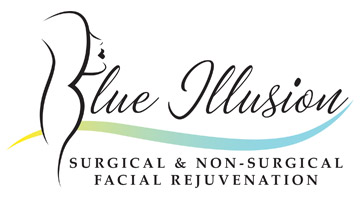Facial Nerve Decompression Surgery
Facial nerve decompression is used in cases of acute facial paralysis where the nerve is severely injured. This is confirmed by electrical testing (ENOG and EMG). Facial nerve decompression is accomplished by a middle-fossa craniotomy to expose the narrowest segment of the facial nerve (labyrinthine segment). The bone overlying the facial nerve is removed to decrease constriction of the nerve. Facial nerve decompression is also used in cases of temporal bone trauma with severe injury to the facial nerve.
Facial Nerve Grafting / Repair
The facial nerve is particularly vulnerable to injury during acoustic neuroma surgery as the tumor is typically adherent to the facial nerve and has to be carefully peeled away. The incidence of facial paralysis is greater after surgery for large acoustic neuromas. Electrical stimulation of the facial nerve at the conclusion of acoustic neuroma surgery can provide useful prognostic information about the status of the nerve and its potential for recovery. For patients presenting with facial paralysis following acoustic neuroma surgery, we will request and carefully review the operative record to determine the status of the facial nerve and any electrical stimulation data that is available. Recovery of facial function can take up to 12 months ( and occasionally up to 18 months). In cases with poor recovery, facial reanimation procedures including nerve transfers, nerve grafts, or muscle transfers can be utilized.
Nerve Transfer Procedures
Nerve transfer or nerve crossover procedures are used when the native facial nerve is intact and the facial musculature has not atrophied. Most commonly, the hypoglossal-facial nerve crossover is utilized in which a portion of the nerve to the tongue is rerouted to the facial nerve. This technique restores tone to the face, and also allows patients to use their tongue musculature to control facial movement. It is most commonly used in the setting of acoustic neuroma surgery where the facial nerve is anatomically intact but demonstrates a poor recovery of facial function. Other nerve crossover procedures that can be utilized are the masseteric-facial transfer utilizing the nerve to the masseter muscle, a prominent chewing muscle.
Muscle Transfer Procedures
Regional Muscle Transfer
The most commonly used regional muscle transfer for smile reanimation is the temporalis transfer. The temporalis muscle is a large fan shaped chewing muscle located overlying the temple. The classic temporalis transfer utilizes a large incision extending into the temporal scalp and the central portion of the muscle is reflected inferiorly and secured to the oral commissure. This technique, however, can result in a depression in the temporal region as well as a bulge over the midface. Dr. Mehta now utilizes a minimally invasive approach to temporalis transfer known as the “minimally invasive temporalis tendon transfer.” This is accomplished through a small incision in the nasolabial fold. Physical therapy is started 3 weeks after the procedure to learn how to use the newly transferred muscle.
Free Muscle Transfer
The gracilis muscle is the workhorse of free muscle transfer for facial reanimation. This slender muscle, obtained from the medial aspect of the upper leg, is transferred to the face. It is typically performed as a second stage after a first stage cross face nerve grafting procedure. Utilizing a cross face nerve graft and transferring nerve input from the normal side of the face is the only way to achieve a natural mimetic smile. The gracilis muscle transfer can also be performed as a single stage procedure utilizing the masseteric nerve as a donor nerve in patients that are not candidates for cross face nerve grafting (e.g. neurofibromatosis type 2 or bilateral facial paralysis).
Static Reanimation Procedures
Static facial reanimation procedures are utilized to restore symmetry to the face in areas where loss of facial muscle tone has occurred. Some of the procedures offered at the California Facial Nerve Center include:
- Brow Ptosis Correction
- Eyelid weight placement – to achieve closure of the eye
- Lower eyelid tightening procedures
- Mid and lower face suspension with fascia lata
- Effacement or enhancement of the nasolabial fold

